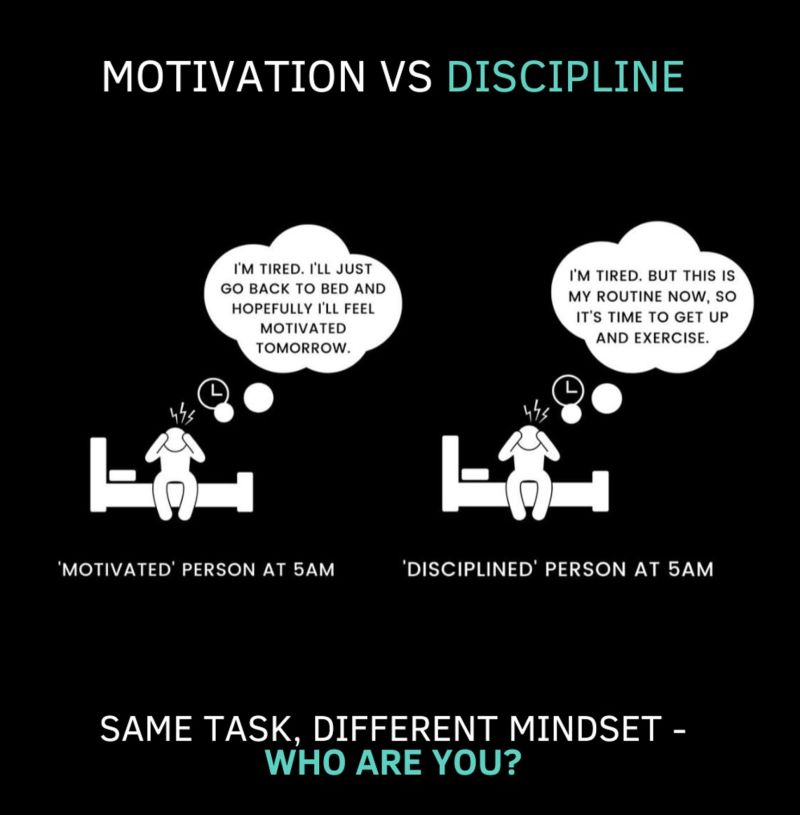
Discipline vs. Motivation: What Really Keeps You Going
Everyone starts their fitness journey feeling motivated — a new program, a new goal, a new spark of energy. But motivation doesn’t last. It fades with tired days, busy schedules, or slow results.
What separates those who transform from those who quit isn’t how motivated they are — it’s how disciplined they’ve become.
1. The Nature of Motivation
Motivation is emotional fuel. It’s powerful but inconsistent — influenced by mood, weather, energy, or even social media. It’s what gets you started, but not what keeps you going.
Motivation spikes when results are visible, but the moment progress slows, so does the drive. As Ryan & Deci (2000) explain in the Self-Determination Theory, motivation alone — especially external motivation — cannot sustain long-term behavior unless supported by internal values and structure.
In short: motivation gets you moving; discipline keeps you moving.
2. Discipline: The Engine Behind Consistency
Discipline means showing up regardless of how you feel. It’s a learned skill, not a personality trait. Where motivation depends on emotion, discipline depends on systems, habits, and accountability.
A disciplined athlete doesn’t ask, “Do I feel like training today?” — they simply train because it’s scheduled. Over time, discipline rewires behavior through habit formation and reward loops (Lally et al., 2010).
Practical examples:
-
Setting fixed training times and treating them like appointments.
-
Following structured programming (like NASC’s periodized templates).
-
Tracking progress to create objective feedback instead of emotional guessing.
3. How NASC Coaches Build Discipline
The National Association for Strength and Conditioning Research (NASC) emphasizes behavioral coaching, not just physical training. NASC-certified coaches are taught to integrate psychological principles such as:
-
Goal setting (SMART framework).
-
Accountability systems (tracking sheets, check-ins).
-
Intrinsic reinforcement — helping clients appreciate the process, not just the outcome.
This turns short bursts of motivation into long-term adherence. The science-backed approach ensures that clients build not only stronger bodies, but stronger mindsets.
4. The Discipline–Motivation Loop
When you act with discipline, you create results. Those results generate motivation — and that renewed motivation fuels further discipline.
It’s a feedback loop:
Discipline → Progress → Motivation → More Discipline
The key is to start with discipline, not wait for motivation to magically appear.
5. The Real-World Application
A professional coach knows that even the best program fails without adherence. That’s why the most successful athletes don’t rely on “feeling inspired.” They rely on structure, accountability, and systems.
Motivation may light the spark — but discipline keeps the fire burning.
Key Takeaway
Motivation gets you started.
Discipline keeps you consistent.
Science keeps you improving.
Build discipline, fuel it with small wins, and let the process carry you forward. That’s the real formula for lifelong strength — inside and out.
References
-
National Association for Strength and Conditioning Research (NASC). (2024). Behavioral Psychology for Strength Coaching. NASC Publications.
